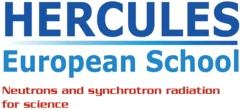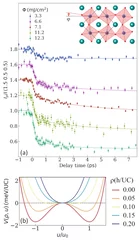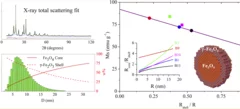News & Scientific Highlights
HERCULES school 2019 at SLS
In the week of April 1-5 PSI welcomes 20 PhD students and postdocs taking part in the European HERCULES 2019 school on Neutron and Synchrotron Radiation. They will attend lectures and perform two days of practical courses at several beam lines of the Swiss Light Source.
Additive Manufacturing of High Entropy Alloys
Additive manufacturing of high-entropy alloys combines the mechanical properties of this novel family of alloys with the geometrical freedom and complexity required by modern designs. An approach to additive manufacturing of high-entropy alloys has been developed based on 3D extrusion of inks containing a blend of oxide nanopowders (Co3O4 + Cr2O3 + Fe2O3 + NiO), followed by co-reduction to metals, inter-diffusion and sintering to near-full density CoCrFeNi in H2. A complex phase evolution path is observed by in-situ X-ray diffraction in extruded filaments: the oxide phases undergo reduction and the resulting metals inter-diffuse, ultimately forming the desired fcc-CoCrFeNi alloy (see figure). Linked to this phase evolution is a complex micro-structural one, from loosely packed oxide particles to fully-annealed, metallic CoCrFeNi with 99.6 ± 0.1% relative density. CoCrFeNi micro-lattices are created with strut diameters as low as 100 μm and excellent mechanical properties at ambient and cryogenic temperatures.
Moving Atoms by Photodoping
Understanding how and how fast we can drive atoms to create a structural phase transition is of fundamental interest as it directly relates to many processes in nature. Here we show that a photoexcitation can drive a purely structural phase transition before the energy is relaxed in the material that corresponds to a “warmer” equilibrated state.
Correlating the Core-Shell Composition and the Surface Structure to the Magnetic Properties for Magnetite-Maghemite Nanoparticles in the 5-15 nm Range
Very small superparamagnetic iron oxide nanoparticles were characterized by innovative synchrotron X-ray total scattering methods and Debye function analysis, developed at the X04SA Materials Science beamline of SLS.



